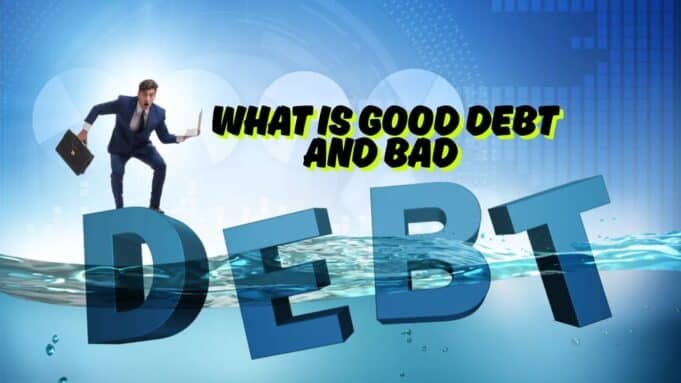When most people hear the word debt, they automatically think of something negative. After all, owing money to someone else doesn’t exactly sound like a good thing. But the truth is, not all debt is bad. Some debt can help you grow financially and build a better future. The trick is understanding the difference between good debt and bad debt.
Sometimes, people end up overwhelmed with debt that feels completely unmanageable. They might turn to debt resolution as a way to get things back under control. These programs work to negotiate lower balances or better payment terms with creditors. While debt resolution can be a lifesaver in serious situations, it’s always better to avoid getting into bad debt in the first place. Learning to tell the difference between good debt and bad debt can help you make smarter choices before things get out of hand.
What Makes Debt “Good”?
Good debt is usually tied to an investment in your future. It’s the kind of debt that can increase your earning potential, improve your quality of life, or help you build long-term wealth. Even though you still owe money, you’re borrowing for a purpose that has the potential to benefit you financially down the road.
For example, a mortgage is often considered good debt. You borrow money to buy a home, which is likely to increase in value over time. Plus, you’re building equity as you make payments, which can turn into real financial security. Student loans also fall into the good debt category when they are used to finance an education that leads to better job opportunities and higher income.
The key with good debt is that it serves a clear, beneficial purpose. You’re taking on debt not just to spend money, but to create a path toward financial growth.
The Danger Zone: Bad Debt
Bad debt, on the other hand, usually involves borrowing money for things that don’t add long-term value. It often comes with high interest rates and can quickly spiral out of control if not managed carefully. Credit card debt is one of the most common forms of bad debt. Many people swipe their credit cards for vacations, dining out, clothing, or other non-essential items, thinking they’ll pay it off later. But high interest rates make it easy to fall into a cycle where you’re only making minimum payments and the balance never seems to go down.
Payday loans and high-interest personal loans also fall into the bad debt category. They’re often used to cover short-term needs, but the cost of borrowing is so high that they can create more financial stress over time.
The problem with bad debt is that you end up paying much more than the original purchase price once interest and fees are added in. And unlike good debt, bad debt rarely offers any return on your investment.
Gray Areas: Debt That’s Hard to Label
Not all debt fits perfectly into the good or bad category. Some types of debt fall into a gray area, depending on how they’re used. For example, using a credit card to cover an emergency car repair might be necessary if you don’t have savings, even though credit card debt is usually seen as bad. In that case, the debt helps you get back on the road and keep earning a paycheck.
Similarly, borrowing money to start a business can be good debt if the business succeeds and grows, but it can turn into bad debt if the venture fails and leaves you with loans you can’t repay. The way you use debt matters as much as the type of debt itself.
The Emotional Side of Debt
It’s easy to think about debt only in terms of numbers, but debt also comes with emotional weight. Bad debt often leads to stress, anxiety, and even guilt. People feel trapped by mounting balances and frustrated by their inability to make progress.
Good debt, while still a responsibility, can feel different. Paying off a mortgage or student loan that’s tied to personal growth can feel like progress rather than punishment. That’s why understanding your emotional response to debt is just as important as knowing the financial details.
Using Debt Wisely
The best approach is not to avoid debt entirely but to use it wisely. If you’re considering taking on debt, ask yourself a few important questions. Is this purchase necessary? Will it improve my financial future? Do I have a realistic plan to pay it off? Can I handle the monthly payments without sacrificing other financial goals?
If the answers point toward growth and responsibility, it might be good debt. If not, it’s probably best to reconsider or find another way to cover the cost.
Recovering From Bad Debt
If you find yourself buried in bad debt, you’re not alone. Many people struggle with this, especially in times of financial hardship. That’s where options like debt resolution come in. A debt resolution company can help you negotiate with creditors to lower your total debt or set up more manageable payment plans. While it’s not a quick fix, it can provide a way to break free from overwhelming debt and rebuild your financial health.
Once you’ve dealt with bad debt, it’s important to learn from the experience and avoid falling back into old habits. Creating a budget, building an emergency fund, and committing to living within your means are key steps toward long-term financial stability.
The Big Picture
At the end of the day, debt itself isn’t automatically good or bad. It’s how you use it that makes the difference. Good debt can help you grow and build a stronger financial future, while bad debt can weigh you down and limit your options.
By understanding the difference and making smart choices, you can use debt as a tool rather than a trap. And if you do find yourself struggling, know that there are resources and strategies available to help you get back on track and regain control of your financial life.
To Know More: Sedona Hiking, Luxury villas in Italy Le Collectionist.















